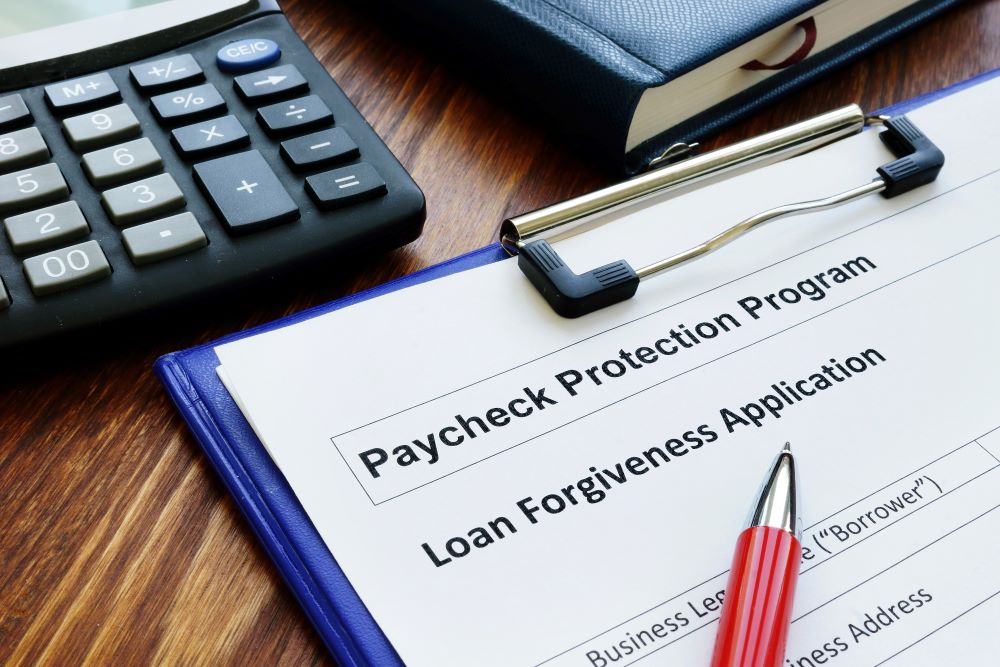Preparing for PPP Loan Forgiveness

The Paycheck Protection Program (PPP) has been one of the most popular COVID-19 economic relief options available through the Small Business Administration (SBA). Since its rollout as part of the CARES Act in 2020, more than 6.6M loans were approved, totaling $277B. Over this time, the PPP has undergone dozens of updates, changes, and extensions. When the SBA announced on May 4, 2021, that the PPP funds had been exhausted, potential applicants were left to explore other options to help their business or nonprofit organization survive and emerge on the other side of the pandemic.
The program’s closing also signaled that PPP loan recipients should begin considering applying for loan forgiveness, as funds from the first iteration of the program – PPP1 – are nearing the due date, which is ten months after the coverage period ends. For example, if a business or nonprofit organization received a loan in June 2020, they need to apply for forgiveness no later than October 2021. Of course, the exact date will depend on the date funds were initially received. For PPP2 loans (when the program received new life through the Paycheck Protection Extension Act of 2021), it may be a bit early to apply for forgiveness. Still, businesses and organizations should check with their financial institution to confirm.
With the multiple changes the PPP has undergone, many remain confused about the forgiveness process, including what information and certifications are required. This article will provide some tips to help navigate the process.
Loan Forgiveness Preparation Tips
- Applying – Borrowers should apply for forgiveness through the financial institution or lender that originated the loan, especially to confirm coverage and other essential details. Many lenders will have a loan forgiveness portal or resource center, which provides important information to guide borrowers through the application process. For example, Bank of America has set up a portal where borrowers can download applications and receive other valuable information. Also, they will more than likely also have a unique checklist of items they will want to support forgiveness qualification.
- Selecting the Proper Forgiveness Application – There are three different applications for forgiveness, including SBA Form 3508-S, 3508-EZ, and 3508. The loan application which should be used is dictated by the size of the loan and other requirements. For borrowers that received a loan for less than $150,000 should use Form 3508S. Those who are self-employed and did not reduce employee headcount, and did not reduce employee salaries by more than 25%, or those who experienced reduced business activity due to the pandemic and did not reduce salaries by more than 25% should use Form 3508-EZ. Finally, all others should use Form 3508.
- Payroll-Related Documentation – It is critical to have detailed payroll records to show that at least 60% of the PPP loan was used for payroll. For payroll expenses incurred during the covered period, it is necessary to compile bank account statements reflecting the cash compensation paid and tax forms, including payroll tax filings and quarterly wage reports. In addition, be sure to include payment receipts, canceled checks, or account statements that document the amount of any employer contributions to health insurance or retirement plans.
The reports will be used to support the wages paid using the PPP funds and support that the number of full-time equivalent employees is still within the allowed range. Some exemptions can be used if the number of full-time equivalents drops below the permitted threshold. However, documentation needs to be maintained to show that the business or non-profit qualifies for the exemption.
- Non-Payroll-Related Documentation – Records detailing other allowed expenses, of which cannot exceed 40% of the loan amount, will need to be presented and include but are not limited to:
- Business Interest Mortgage Payments – This includes copies of the lender amortization schedule and receipts verifying payments.
- Rent or Lease Agreements – Copies of current lease agreements and receipts or canceled checks verifying payments were made.
- Utility Payments – Copies of invoices and receipts, including canceled checks or account statements.
- Operating Expenses – Include copies of invoices, paid purchase orders, receipts, and canceled checks verifying payments were made.
It is recommended to take full advantage of reporting the Non-Payroll-Related items even if they are not needed to qualify for forgiveness. Failure to utilize all of the allowable Non-Payroll Related items could negatively impact the Employee Retention Credit (ERC) if the business or organization is eligible to claim it.
- Retention – The documentation above should be kept by the business or nonprofit for a minimum of three years. The SBA has indicated that they will review applications for forgiveness with extra scrutiny on PPP loans over $150,000. However, the SBA will spot audit PPP loans that are under the $150,000 Safe Harbor.
The PPP has been popular amongst businesses and nonprofits mainly due to the 100% loan forgiveness feature. For this reason, it is important to carefully prepare your loan forgiveness application, including relevant documentation, to ensure complete loan forgiveness. Also, there is an interplay between the PPP and the ERC, which we can help maximize.
Contact Us
If you have questions about the information outlined above or need assistance with loan forgiveness, Klatzkin can help. Click here to contact us. We look forward to speaking with you soon.
©2021 Klatzkin & Company LLP. The above represents our best understanding and interpretation of the material covered as of this post’s date and does not constitute accounting, tax, or financial advice. Please consult your advisor concerning your specific situation.
